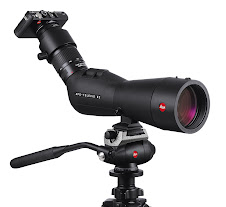
 Leitz Binocle 6x18 binocular, 1907
Leitz Binocle 6x18 binocular, 1907Leitz had been producing premium, precision optics (mainly microscopes) in their Wetzlar, Germany plant (top) for nearly 60 years when they introduced their first commercially available binocular on May 14, 1907. The resultant Leitz Binocle 6x18 was the first binocular introduced and it was followed by a number of similar products to include the Leitz Binodal 6x21 (1908 - 1919), and the highly stylish little Gallilei (below) in 1912.
 Leitz Gallilei binocular, 1912
Leitz Gallilei binocular, 1912
As today, these early Leica binoculars were praised for their high quality imaging and in World War I the US Navy borrowed these optical treasures from US citizens as part of their "Eyes for the Navy" program. Like the Leitz Binominia below, each borrowed binoc was engraved with a serial number and cataloged by the US Navy for return at the end of the war.


 Leitz Aviodix 10x50, brass-bodied binocular, 1917
Leitz Aviodix 10x50, brass-bodied binocular, 1917
Leitz Binuxit 8x30, 1927
The stylish Leitz Amplivid really changed the path of the Leitz line-up forever though. This amazing 6x24 roof-prism design (1955) offered a revolutionary wide-angle view of greater than 600 feet at 1,000 yards! This incredibly well-received product, marked the end of porro-prism models at Leitz.
 Leitz Amplivid 6x24 binocular, 1955
Leitz Amplivid 6x24 binocular, 1955
Following the huge success of the Amplivid, Leitz developed its first model of the famed Leitz Trinovid. Named for the latin root "to see" (-vid), the trinovid introduced three novel (Trino-) innovations to the industry when first introduced in 1957 which has been copied ever since:
1) slim construction
2) superior ergonomics
3) true internal focus system
These first generation models were short lived and were soon replaced with the more familiar, slightly shorter 2nd generation models. Due to the limited run time, these early Trinovids are a big hit amongst collectors (be sure to check your attics thoroughly!)

Leica Trinovid BN 10x42
The amazingly popular, sleek, leather-bound 2nd generation Trinovids remained in the market place for over three decades, until the robust 3rd generation Trinovid hit the market in 1990.
With a new name, Leica went to the marketplace in the mid 1980's and asked consumers and industry leaders what they wanted to see in their binoculars. It seemed serious optics users wanted a more robust, completely waterproof product that could handle any elements one might throw at it. One thing that wasn't apparent in this early survey though, was a demand for close-focus. The earlier Leica Trinovid BA binoculars focused to only about 18 feet, however in response to market demand, (especially birders) Leica made a rolling change in the Trinovid line in the year 2,000. The newer Leica Trinovid BN now close-focused to ~6-9' depending on the model in question.
This trend continues today and demands for lighter weight products have been answered by the Leica Ultravid BR line (the most waterproof binocular in the industry today), which also had significantly improved light transmission over older Trinovids. As recently as 2007, the latest round of inovation (the Leica Ultravid HD line) now allows users to send water droplets sailing with a flick of a wrist. Handy if you're like me, and don't have sense enough to get out of the rain!



No comments:
Post a Comment